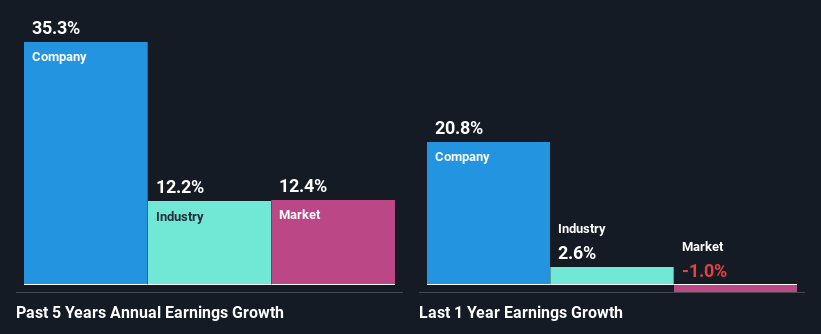It is hard to get excited after looking at CVS Group’s (LON:CVSG) recent performance, when its stock has declined 44% over the past three months. However, stock prices are usually driven by a company’s financial performance over the long term, which in this case looks quite promising. Specifically, we decided to study CVS Group’s ROE in this article.
Return on equity or ROE is an important factor to be considered by a shareholder because it tells them how effectively their capital is being reinvested. In other words, it is a profitability ratio which measures the rate of return on the capital provided by the company’s shareholders.
View our latest analysis for CVS Group
How To Calculate Return On Equity?
The formula for return on equity is:
Return on Equity = Net Profit (from continuing operations) ÷ Shareholders’ Equity
So, based on the above formula, the ROE for CVS Group is:
13% = UK£36m ÷ UK£266m (Based on the trailing twelve months to December 2023).
The ‘return’ refers to a company’s earnings over the last year. One way to conceptualize this is that for each £1 of shareholders’ capital it has, the company made £0.13 in profit.
What Is The Relationship Between ROE And Earnings Growth?
Thus far, we have learned that ROE measures how efficiently a company is generating its profits. Based on how much of its profits the company chooses to reinvest or “retain”, we are then able to evaluate a company’s future ability to generate profits. Assuming all else is equal, companies that have both a higher return on equity and higher profit retention are usually the ones that have a higher growth rate when compared to companies that don’t have the same features.
A Side By Side comparison of CVS Group’s Earnings Growth And 13% ROE
To begin with, CVS Group seems to have a respectable ROE. Further, the company’s ROE compares quite favorably to the industry average of 8.2%. This certainly adds some context to CVS Group’s exceptional 35% net income growth seen over the past five years. However, there could also be other causes behind this growth. Such as – high earnings retention or an efficient management in place.
We then compared CVS Group’s net income growth with the industry and we’re pleased to see that the company’s growth figure is higher when compared with the industry which has a growth rate of 12% in the same 5-year period.
Earnings growth is an important metric to consider when valuing a stock. The investor should try to establish if the expected growth or decline in earnings, whichever the case may be, is priced in. Doing so will help them establish if the stock’s future looks promising or ominous. Is CVS Group fairly valued compared to other companies? These 3 valuation measures might help you decide.
Is CVS Group Efficiently Re-investing Its Profits?
CVS Group’s ‘ three-year median payout ratio is on the lower side at 18% implying that it is retaining a higher percentage (82%) of its profits. So it seems like the management is reinvesting profits heavily to grow its business and this reflects in its earnings growth number.
Besides, CVS Group has been paying dividends for at least ten years or more. This shows that the company is committed to sharing profits with its shareholders. Upon studying the latest analysts’ consensus data, we found that the company’s future payout ratio is expected to drop to 9.0% over the next three years. As a result, the expected drop in CVS Group’s payout ratio explains the anticipated rise in the company’s future ROE to 19%, over the same period.
Summary
Overall, we are quite pleased with CVS Group’s performance. Particularly, we like that the company is reinvesting heavily into its business, and at a high rate of return. Unsurprisingly, this has led to an impressive earnings growth. Having said that, the company’s earnings growth is expected to slow down, as forecasted in the current analyst estimates. Are these analysts expectations based on the broad expectations for the industry, or on the company’s fundamentals? Click here to be taken to our analyst’s forecasts page for the company.
Have feedback on this article? Concerned about the content? Get in touch with us directly. Alternatively, email editorial-team (at) simplywallst.com.
This article by Simply Wall St is general in nature. We provide commentary based on historical data and analyst forecasts only using an unbiased methodology and our articles are not intended to be financial advice. It does not constitute a recommendation to buy or sell any stock, and does not take account of your objectives, or your financial situation. We aim to bring you long-term focused analysis driven by fundamental data. Note that our analysis may not factor in the latest price-sensitive company announcements or qualitative material. Simply Wall St has no position in any stocks mentioned.


















